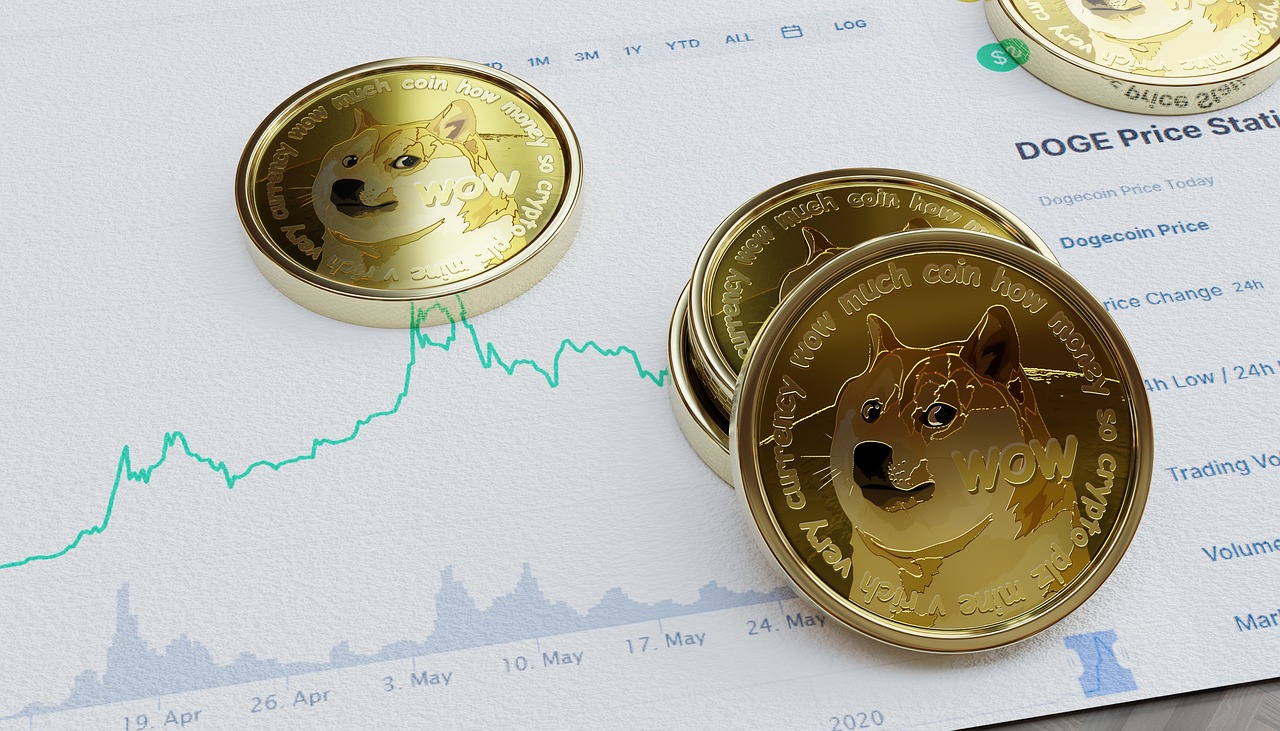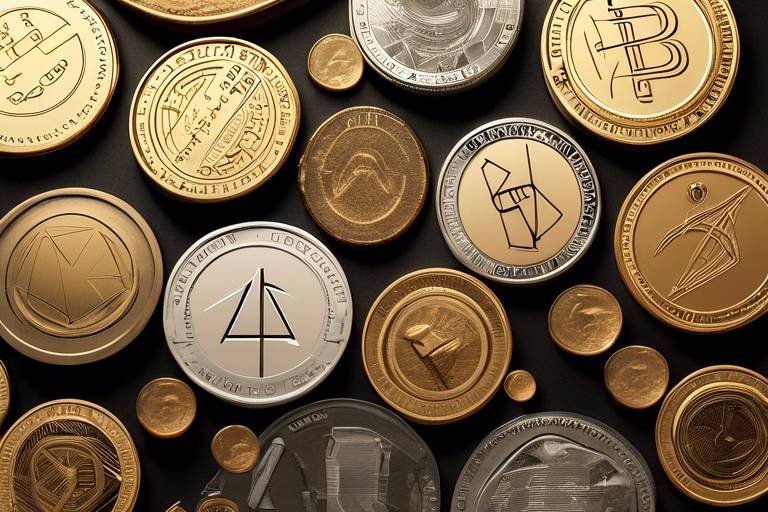How to Engage in Ethical Cryptocurrency Trading
In the fast-paced world of cryptocurrency, where fortunes can be made or lost in the blink of an eye, engaging in ethical trading practices is not just a noble choice—it's a necessity. As the digital currency landscape evolves, so does the need for traders to uphold integrity, transparency, and responsibility. But what does it really mean to trade ethically in this volatile market? In this article, we will explore the principles and practices that define ethical cryptocurrency trading, helping you navigate this exciting yet challenging environment.
First and foremost, ethical trading is about more than just profits; it’s about aligning your investments with your values. It involves making decisions that not only benefit your financial portfolio but also contribute positively to the broader community and the environment. Imagine walking through a bustling marketplace where every vendor is not only selling their goods but also ensuring that their practices are fair and sustainable. This is the essence of ethical trading in the cryptocurrency realm.
As we dive deeper, you'll learn about the core principles that guide ethical traders, including the importance of research, understanding market dynamics, and implementing risk management strategies. Each of these elements plays a crucial role in fostering an environment where traders can thrive while maintaining their moral compass. So, buckle up as we embark on this journey to discover how to engage in ethical cryptocurrency trading!
At the heart of ethical cryptocurrency trading lies a set of principles that emphasize moral standards and responsible investing. These principles serve as a roadmap, guiding traders to make decisions that align with their values. Here are some key ethical trading principles:
- Transparency: Always disclose information clearly and avoid misleading practices.
- Accountability: Take responsibility for your trading decisions and their impact on others.
- Community Support: Engage with and support projects that promote positive social and environmental outcomes.
By adhering to these principles, traders can cultivate a sense of trust and respect within the cryptocurrency community. This not only enhances personal credibility but also contributes to a healthier market overall. In an industry often criticized for its lack of regulation and ethical standards, being a responsible trader can set you apart from the crowd.
Before diving into any investment, conducting thorough research is paramount. In the cryptocurrency space, this means evaluating projects based on their technology, team, and community support. Think of it as investigating a potential business partner before signing a contract—you wouldn’t want to team up with someone who lacks integrity or a solid plan, right?
When researching cryptocurrency projects, consider these aspects:
- Technology: Assess the underlying technology and its potential for real-world application.
- Team: Investigate the backgrounds and qualifications of the team members.
- Community: Gauge the level of community engagement and sentiment surrounding the project.
The expertise of a project’s team can make or break its success. A strong team with a proven track record can inspire confidence and indicate a higher likelihood of success. Look for team members with relevant experience in technology, finance, and project management. It’s like assembling a sports team; you want the best players who complement each other's skills to achieve victory.
Whitepapers are essential documents that outline the goals, technology, and roadmap of a cryptocurrency project. To make informed decisions, it's crucial to read and interpret these documents carefully. Look for clarity in the project's objectives and feasibility in their plans. A well-crafted whitepaper is often a good sign of a project's legitimacy.
A strong community can be a significant indicator of a project's viability. Engage with forums, social media, and other platforms to assess the sentiment within the community. A vibrant, supportive community often reflects a project’s potential for growth and sustainability.
Staying informed about market trends is vital for ethical trading. Utilize various tools and techniques to analyze market movements, such as price charts, trading volumes, and market sentiment indicators. This data-driven approach allows you to make more informed trading decisions, akin to a captain steering a ship by observing the stars and weather patterns.
Effective risk management is key to sustainable trading practices. Without it, even the most promising investments can lead to significant losses. Here are some strategies to minimize risks while maximizing potential returns:
Diversification is like spreading your bets across multiple horses in a race. By investing in a variety of cryptocurrencies, you can protect yourself from the volatility of any single asset. Consider allocating your investments across different sectors within the cryptocurrency market to mitigate risks associated with market fluctuations.
Establishing achievable trading goals is crucial for long-term success. Set clear, measurable objectives and adjust them based on market conditions and your personal risk tolerance. Remember, trading is a marathon, not a sprint. Keeping your expectations grounded will help you navigate the inevitable ups and downs of the market.
Q1: What is ethical cryptocurrency trading?
A1: Ethical cryptocurrency trading involves making investment decisions that align with moral standards and contribute positively to the community and environment.
Q2: How can I research cryptocurrency projects?
A2: Evaluate projects based on their technology, team credentials, and community engagement. Reading whitepapers and participating in community forums can provide valuable insights.
Q3: Why is risk management important in trading?
A3: Effective risk management helps minimize potential losses and ensures sustainable trading practices, allowing you to navigate the market's volatility more effectively.

Understanding Ethical Trading Principles
When diving into the world of cryptocurrency, it's essential to recognize that ethical trading isn't just a trend; it's a necessity. In a landscape often marred by speculation and volatility, adhering to ethical trading principles can set you apart from the crowd. But what exactly does it mean to trade ethically? At its core, ethical trading involves making decisions that align with moral standards while participating in cryptocurrency transactions. This means not only focusing on profit but also considering the broader impact of your trading activities.
One of the fundamental principles of ethical trading is transparency. Ethical traders prioritize clear and honest communication about their intentions and strategies. This transparency builds trust within the community and fosters an environment where informed decisions can be made. Imagine a marketplace where everyone lays their cards on the table—sounds ideal, right? This is the essence of ethical trading.
Another crucial aspect is responsibility. As traders, we hold a certain responsibility towards the market and its participants. This includes being aware of the potential consequences of our trading actions, such as the impact of market manipulation or spreading misinformation. Ethical traders strive to make choices that contribute positively to the ecosystem. They understand that every trade can affect prices and sentiment, and thus, they act with care and consideration.
Moreover, adhering to ethical trading principles means being informed. Knowledge is power, especially in the fast-paced world of cryptocurrencies. Ethical traders dedicate time to research and understand the projects they invest in. This commitment to education not only enhances their trading skills but also empowers them to make decisions that align with their values. They ask questions like: Is this project solving a real problem? Does the team behind it have a solid track record? By seeking answers, they ensure their investments are not just about quick gains but about supporting meaningful innovations.
Lastly, ethical trading emphasizes the importance of community. Engaging with others in the cryptocurrency space fosters a sense of belonging and accountability. Ethical traders often participate in forums, attend meetups, and contribute to discussions, sharing insights and experiences. This collaborative spirit not only enriches their own knowledge but also strengthens the community as a whole. Remember, trading isn't just a solitary endeavor; it's part of a larger ecosystem where every participant plays a role.
In summary, embracing ethical trading principles means committing to transparency, responsibility, informed decision-making, and community engagement. These values not only enhance your trading experience but also contribute to the overall health of the cryptocurrency market. So, the next time you consider a trade, ask yourself: Am I trading ethically? Your answer could make all the difference.

Researching Cryptocurrency Projects
When it comes to investing in cryptocurrency, the phrase "knowledge is power" couldn't be more accurate. Before you dive headfirst into the digital currency pool, it's essential to conduct thorough research on the projects that pique your interest. This isn't just about understanding the price charts; it’s about delving into the very fabric of the project itself. Think of it as investigating a new restaurant before you decide to dine there—would you really want to spend your hard-earned money without knowing if the food is good or if the service is reliable?
One of the first steps in your research journey is to evaluate the technology behind the cryptocurrency. What problem does it aim to solve? Is the technology innovative or just a rehash of existing solutions? Look for projects that offer real-world applications and have a clear value proposition. For instance, if a project claims to enhance security in transactions, find out how it does so and whether it has been tested in real-world scenarios.
Next, you should consider the team behind the project. A great idea is only as good as the people executing it. Check out their backgrounds, previous projects, and industry experience. Are they known in the cryptocurrency community? Have they successfully launched projects before? The credibility and expertise of the team can often be the deciding factor in a project's potential success. You might even want to create a simple table to compare different teams, like so:
| Project Name | Team Leader | Experience | Previous Projects |
|---|---|---|---|
| CryptoX | Jane Doe | 10 years in tech | BlockChain Innovations |
| TokenY | John Smith | 5 years in finance | FinTech Solutions |
Another crucial aspect to investigate is the project's whitepaper. This document is like the blueprint of the cryptocurrency; it outlines the project's goals, technology, and roadmap. Reading a whitepaper can feel daunting, but it’s essential for understanding the project’s vision. Look for clear, jargon-free explanations of how the project intends to achieve its objectives. If the whitepaper is filled with buzzwords but lacks substance, it might be a red flag.
Lastly, don't underestimate the power of community engagement. A vibrant, active community can be a strong indicator of a project's viability. Check out cryptocurrency forums, social media platforms, and even Reddit threads to gauge the sentiment around the project. Are people excited and supportive, or are there complaints and skepticism? Engaging with the community can provide invaluable insights that you won't find in official documents.
In summary, researching cryptocurrency projects requires a multi-faceted approach. By examining the technology, evaluating the team, understanding the whitepaper, and engaging with the community, you can make informed decisions that align with your investment goals. Remember, the world of cryptocurrency is fast-paced and ever-changing, so staying informed is your best strategy for success.

Evaluating Team Credentials
When diving into the world of cryptocurrency, one of the most critical steps you can take is to evaluate the credentials of the project team. After all, a cryptocurrency project is only as strong as the people behind it. Think of it like a band; if the musicians lack talent, the music will likely be off-key. Similarly, a project with an inexperienced or unqualified team may struggle to deliver on its promises. Here are some key aspects to consider when evaluating team credentials:
First and foremost, look at the team's experience. Have they worked on successful projects in the past? A proven track record in the tech or finance sectors can be a strong indicator of a team's capability. You can often find this information on their LinkedIn profiles or personal websites. Moreover, check if they have relevant experience in blockchain technology or cryptocurrency, as this specialized knowledge can be crucial for the project's success.
Next, consider the diversity of skills within the team. A well-rounded team usually includes members with expertise in various areas such as development, marketing, finance, and community management. This diversity can foster innovation and ensure that the project is well-equipped to tackle challenges from multiple angles. For instance, a project lacking in marketing expertise may struggle to gain traction, no matter how technically sound it is.
Additionally, it’s essential to gauge the transparency and communication style of the team. Are they active on social media? Do they regularly update the community about their progress? A team that engages openly with its community often builds trust and credibility. You can assess this by checking their social media channels, project forums, and even attending their webinars or AMAs (Ask Me Anything) sessions. If they are approachable and responsive, it's a good sign that they value their investors and are committed to the project's success.
Lastly, don't overlook the importance of community feedback. The cryptocurrency community is vocal and typically quick to share their opinions about a project. Look for reviews and discussions on platforms like Reddit, Twitter, or specialized cryptocurrency forums. Positive sentiment from the community can be an encouraging sign that the team is doing something right, while widespread criticism could be a red flag.
To sum it up, evaluating team credentials is a multi-faceted process that requires a keen eye and a bit of research. By focusing on experience, skill diversity, communication, and community sentiment, you can make more informed decisions about which cryptocurrency projects to support. Remember, investing in cryptocurrency is not just about numbers; it's about the people behind those numbers.
- How important is the team behind a cryptocurrency project?
The team is crucial as their experience, skills, and transparency can significantly affect the project's success. - Where can I find information about a project's team?
You can check LinkedIn profiles, the project’s official website, and social media channels for team information. - What should I do if I find negative feedback about a project team?
It's wise to conduct further research and consider the overall sentiment before making any investment decisions.

Understanding Whitepapers
When diving into the world of cryptocurrency, one of the first things you’ll encounter is the whitepaper. Think of it as the blueprint for a new digital currency project. Just like a solid architectural plan is essential for constructing a sturdy building, a well-crafted whitepaper lays the foundation for understanding the project’s objectives, technology, and potential impact on the market. But how do you truly grasp what’s inside these often technical documents?
To start, a whitepaper typically includes several key sections that provide a comprehensive overview of the project. Here’s a quick breakdown of what to look for:
- Introduction: This section outlines the problem the project aims to solve. It sets the stage for the reader to understand the necessity of the cryptocurrency.
- Technology: Here, you’ll find a detailed explanation of the underlying technology and how it differentiates the project from others. Look for technical specifications, algorithms, and any unique features.
- Tokenomics: This part explains the economic model of the cryptocurrency, including how tokens will be distributed, their utility, and any incentives for holders.
- Roadmap: A timeline of the project’s development phases. This is crucial for assessing the feasibility and future plans of the project.
- Team: Information about the team behind the project, including their experience and qualifications. This can significantly impact your investment decision.
Reading a whitepaper can be daunting, especially if you’re not familiar with technical jargon. However, it’s important to approach it with a critical eye. Ask yourself questions like:
- Does the project solve a real-world problem?
- Is the technology innovative or just a rehash of existing solutions?
- Are the team members credible and experienced?
- Is the roadmap realistic?
By dissecting the whitepaper in this manner, you can make more informed decisions about whether to invest in a particular cryptocurrency. Remember, a well-researched investment is often a more successful one. So, take your time, dig deep, and don’t hesitate to seek out additional resources if something isn’t clear. The more you understand, the better equipped you’ll be to navigate the thrilling yet volatile world of cryptocurrency trading.
In conclusion, understanding whitepapers is not just a stepping stone; it’s a vital part of your journey into ethical cryptocurrency trading. They are your compass in a sea of digital currencies, guiding you toward projects that align with your investment philosophy and ethical standards.

Community Engagement
When it comes to cryptocurrency, the community is everything. Think of it as the lifeblood of any project; without a vibrant and engaged community, even the most promising cryptocurrency can falter. So, what does community engagement really mean in the context of ethical trading? It’s about understanding the sentiment, values, and motivations of the people who are invested in a project. Engaging with the community allows you to tap into a wealth of knowledge and insights that can inform your trading decisions.
One of the best ways to gauge community sentiment is by diving into forums and social media platforms. Platforms like Reddit, Twitter, and even Discord have become hotspots for discussions around various cryptocurrencies. Here, you can find a mix of opinions, from enthusiastic supporters to skeptical critics. It’s crucial to sift through these voices carefully, as the community can often provide early warnings about potential issues or exciting developments within a project.
Moreover, an active community often indicates a project's viability and sustainability. When investors are engaged and passionate, it usually means they believe in the project’s mission and are willing to support it through thick and thin. This can lead to greater resilience during market downturns. To assess community engagement, consider looking at the following:
- Participation Levels: Are people actively discussing the project? High levels of engagement can signify a strong community.
- Quality of Discussions: Are the conversations constructive? A knowledgeable community can provide valuable insights.
- Community Initiatives: Are there events, meetups, or educational resources being shared? This shows a commitment to growth.
In addition, participating in community discussions yourself can be incredibly beneficial. By asking questions and sharing your own insights, you not only gain valuable information but also build relationships with other traders and investors. This network can prove invaluable, especially when navigating the often-volatile world of cryptocurrency trading.
In summary, community engagement is a cornerstone of ethical cryptocurrency trading. By immersing yourself in the community, you can gain a deeper understanding of the projects you’re interested in and make more informed trading decisions. Remember, the community is not just a resource; it’s a vital part of the cryptocurrency ecosystem that can significantly impact your investment journey.
Q1: Why is community engagement important in cryptocurrency trading?
A1: Community engagement provides insights into the sentiment and viability of a project. An active community often indicates a project's strength and sustainability.
Q2: Where can I find active cryptocurrency communities?
A2: You can find active communities on platforms like Reddit, Twitter, Discord, and Telegram, where discussions about various cryptocurrencies take place.
Q3: How can I participate in a cryptocurrency community?
A3: You can participate by joining discussions, asking questions, sharing insights, and attending community events or meetups.
Q4: What should I look for in community discussions?
A4: Look for participation levels, the quality of discussions, and community initiatives that indicate engagement and commitment to the project.

Analyzing Market Trends
In the fast-paced world of cryptocurrency, staying ahead of the game requires more than just a hunch or a gut feeling. It’s about with precision and insight. Understanding the patterns and movements within the market can be the difference between a profitable trade and a costly mistake. Think of it like navigating a ship through turbulent waters; you need to read the waves and adjust your sails accordingly. So, how do we effectively analyze these trends?
First, it’s essential to utilize a variety of tools and resources available to traders. Platforms like CoinMarketCap and TradingView provide real-time data on price movements, trading volumes, and market capitalization. By regularly checking these platforms, traders can spot emerging trends and make informed decisions. Furthermore, technical analysis plays a crucial role in understanding market behavior. This involves examining historical price charts and identifying patterns that may predict future movements. Common indicators include:
- Moving Averages: These help smooth out price data to identify trends over a specific period.
- Relative Strength Index (RSI): This momentum oscillator measures the speed and change of price movements, helping traders identify overbought or oversold conditions.
- Bollinger Bands: These indicate volatility and potential price reversals by measuring how far prices deviate from a moving average.
In addition to technical analysis, keeping an eye on news events and market sentiment is equally important. Cryptocurrency markets are heavily influenced by external factors such as regulatory news, technological advancements, and macroeconomic trends. For instance, a government announcement regarding cryptocurrency regulations can cause significant price fluctuations. Therefore, it’s crucial to stay updated with news sources and social media channels to gauge market sentiment. Engaging with communities on platforms like Twitter and Reddit can provide valuable insights into how other traders perceive market developments.
Moreover, understanding the broader economic environment can sharpen your analytical skills. Consider factors such as inflation rates, interest rates, and overall market stability. These elements can affect investor behavior and, consequently, cryptocurrency prices. For example, during periods of economic uncertainty, many investors flock to cryptocurrencies as a hedge against traditional market downturns.
To summarize, analyzing market trends involves a combination of technical analysis, staying informed about news, and understanding the broader economic landscape. By integrating these elements, traders can develop a robust strategy that not only maximizes potential gains but also minimizes risks. Remember, in the world of cryptocurrency, knowledge is power, and those who take the time to analyze the market will be better equipped to navigate its complexities.
- What tools are best for analyzing cryptocurrency trends? Tools like CoinMarketCap, TradingView, and various charting software are excellent for tracking price movements and trends.
- How does news affect cryptocurrency prices? News can significantly impact market sentiment, leading to price fluctuations based on investor reactions to regulatory changes or technological developments.
- Why is technical analysis important in cryptocurrency trading? Technical analysis helps identify trends and potential price movements, allowing traders to make informed decisions based on historical data.

Implementing Risk Management Strategies
When it comes to navigating the thrilling yet turbulent waters of cryptocurrency trading, effective risk management is your lifeboat. Just like a seasoned sailor knows to check the weather before setting sail, a savvy trader understands the importance of minimizing risks to safeguard their investments. The cryptocurrency market is notorious for its volatility, and without a solid risk management strategy, you could find yourself capsized in a sea of losses. So, how can you implement these strategies effectively? Let’s dive in!
First and foremost, one of the most powerful tools in your risk management arsenal is diversification. Imagine you have a basket filled with different types of fruits; if one type spoils, you still have others to enjoy. Similarly, by spreading your investments across various cryptocurrencies, you can protect yourself from the unpredictable swings of any single asset. A well-diversified portfolio might include a mix of established coins like Bitcoin and Ethereum, as well as promising altcoins. This approach not only minimizes risk but also opens up opportunities for growth across different sectors of the market.
Next, let’s talk about setting realistic goals. It’s all too easy to get caught up in the hype of potential profits, but setting achievable trading goals is crucial for long-term success. This means taking the time to assess your personal risk tolerance and market conditions before diving in. For instance, if you’re a beginner, aiming for a 50% return in your first month might be unrealistic. Instead, focus on smaller, incremental goals that allow you to learn and adapt without putting your entire investment at risk. A good rule of thumb is to set goals that are SMART: Specific, Measurable, Achievable, Relevant, and Time-bound.
Moreover, employing stop-loss orders can be a game-changer in your risk management strategy. Think of stop-loss orders as a safety net; they automatically sell your assets when they reach a certain price, helping you avoid catastrophic losses. For example, if you purchase a cryptocurrency at $100, you might set a stop-loss order at $90. This way, if the price drops, you minimize your losses and protect your capital. It’s like having a parachute when you jump out of a plane—you hope you won’t need it, but it’s reassuring to know it’s there!
To sum up, implementing risk management strategies in cryptocurrency trading isn't just about protecting your investments; it's about fostering a mindset that embraces caution and foresight. By diversifying your portfolio, setting realistic goals, and utilizing tools like stop-loss orders, you can navigate the choppy waters of cryptocurrency trading with greater confidence and resilience.
- What is the best way to diversify my cryptocurrency portfolio?
A good strategy is to invest in a mix of large-cap, mid-cap, and small-cap cryptocurrencies, along with different sectors like DeFi, NFTs, and stablecoins. - How do I determine my risk tolerance?
Assess your financial situation, investment goals, and how much loss you can comfortably endure without panic. - Are stop-loss orders always effective?
While stop-loss orders can help limit losses, they may not always execute at the desired price in a highly volatile market.

Diversification Techniques
Diversification is a critical strategy for anyone looking to navigate the unpredictable waters of cryptocurrency trading. Think of it like a safety net; just as a tightrope walker wouldn’t perform without a harness, traders shouldn’t put all their capital into a single asset. By spreading investments across various cryptocurrencies, traders can significantly reduce their risk exposure. This approach not only protects against the volatility of individual assets but also opens up opportunities for profit across multiple avenues.
When considering how to diversify effectively, it’s essential to evaluate a few key factors:
- Asset Types: Different types of cryptocurrencies serve various purposes. For example, Bitcoin (BTC) is often seen as a store of value, whereas Ethereum (ETH) is known for its smart contract capabilities. Including a mix of these can balance your portfolio.
- Market Capitalization: Investing in a combination of large-cap, mid-cap, and small-cap cryptocurrencies can provide a safety net against market fluctuations. Large-cap coins may offer stability, while smaller coins may present higher growth potential.
- Geographic Diversification: Cryptocurrencies aren’t limited to a single market. Exploring projects from different regions can help mitigate risks associated with localized regulatory changes.
To illustrate how diversification can work in practice, let’s take a look at a hypothetical portfolio:
| Cryptocurrency | Type | Market Cap | Percentage of Portfolio |
|---|---|---|---|
| Bitcoin (BTC) | Store of Value | Large Cap | 40% |
| Ethereum (ETH) | Smart Contracts | Large Cap | 30% |
| Chainlink (LINK) | Oracles | Mid Cap | 15% |
| Cardano (ADA) | Platform | Mid Cap | 10% |
| Polygon (MATIC) | Layer 2 Scaling | Small Cap | 5% |
This table demonstrates a well-rounded approach, where larger percentages are allocated to established cryptocurrencies while still leaving room for smaller, potentially high-growth assets. The idea is to create a balance that allows for potential gains while cushioning against losses.
It's vital to remember that diversification doesn't eliminate risk entirely; it merely helps manage it. Traders should continuously monitor their portfolios and adjust their allocations based on market conditions and personal risk tolerance. This dynamic strategy can lead to more sustainable trading practices and ultimately contribute to long-term success in the cryptocurrency market.
Q1: What is the best way to start diversifying my cryptocurrency portfolio?
A1: Start by researching different cryptocurrencies and their use cases. Allocate your investments based on factors like market cap, technology, and your risk tolerance.
Q2: How often should I reassess my diversified portfolio?
A2: It's wise to review your portfolio regularly, especially after significant market movements or changes in project fundamentals. Aim for at least quarterly assessments.
Q3: Can diversification guarantee profits in cryptocurrency trading?
A3: While diversification can reduce risk, it cannot guarantee profits. The cryptocurrency market is inherently volatile, so it's essential to stay informed and adapt your strategy as needed.

Setting Realistic Goals
When it comes to cryptocurrency trading, setting realistic goals is not just a good idea—it's essential. Imagine you're embarking on a road trip without a map; you might end up lost, frustrated, and far from your destination. The same applies to trading. Without clear objectives, you risk wandering aimlessly in a volatile market. So, how do you define what “realistic” means in the context of crypto? It’s all about aligning your goals with your personal circumstances, market conditions, and risk tolerance.
First off, consider your timeframe. Are you looking to make quick gains, or are you more inclined toward long-term investments? Short-term traders often aim for quick profits, but this can lead to impulsive decisions. On the other hand, long-term investors might focus on gradual growth. Understanding your timeframe will help you set specific, achievable goals. For instance, if you’re a day trader, a realistic goal might be to achieve a certain percentage gain on your investment each week. For a long-term investor, it could be about holding onto a cryptocurrency for several months or years, aiming for a specific price point.
Next, you need to assess your risk tolerance. This is crucial because it dictates how much you can afford to lose without losing your cool. It’s like deciding how high you’re willing to climb on a roller coaster. If you’re someone who panics easily, you might want to set conservative goals that reflect a lower risk. This could mean aiming for smaller, more consistent gains rather than chasing after the next big thing. For instance, if you’re comfortable with a 5% loss, then setting a goal to achieve a 10% gain might be a good starting point.
Another aspect to consider is the market conditions. The cryptocurrency market is notorious for its volatility, and what seems realistic today might not hold true tomorrow. Keeping an eye on market trends and adjusting your goals accordingly is vital. For example, if Bitcoin suddenly drops by 20%, your goal of a 50% return might need to be reevaluated. Flexibility is key, and being able to pivot your strategy can save you from significant losses.
Lastly, don’t forget the importance of tracking your progress. Just as you wouldn’t set out on a journey without checking your GPS, you shouldn’t set goals without a way to measure your success. Use tools and platforms that allow you to monitor your trades and assess whether you’re on track to meet your objectives. This will not only provide you with valuable insights but also keep you motivated.
In summary, setting realistic goals in cryptocurrency trading involves a blend of understanding your timeframe, assessing your risk tolerance, staying aware of market conditions, and tracking your progress. By doing so, you create a roadmap that guides your trading decisions, helping you navigate the unpredictable world of digital currencies with confidence and clarity.
- What is the importance of setting goals in cryptocurrency trading? Setting goals helps traders stay focused, make informed decisions, and measure their progress over time.
- How can I determine my risk tolerance? Assess your financial situation, emotional responses to loss, and investment experience to gauge how much risk you can handle.
- Should I adjust my goals based on market changes? Yes, flexibility is essential. Regularly review and adjust your goals according to market conditions.
- What tools can I use to track my trading performance? There are various platforms and apps available that allow you to monitor your trades, analyze performance, and set alerts for price changes.
Frequently Asked Questions
- What is ethical cryptocurrency trading?
Ethical cryptocurrency trading refers to the practice of trading digital currencies while adhering to moral standards and principles. This includes being transparent about your trading activities, conducting thorough research, and making informed decisions that do not harm others in the market.
- Why is research important before investing in cryptocurrencies?
Research is crucial because the cryptocurrency market is highly volatile and filled with potential risks. By evaluating projects based on their technology, team, and community support, you can make informed decisions that significantly reduce the chances of losses and enhance your investment strategy.
- How can I evaluate the credentials of a cryptocurrency project's team?
You can assess a project's team by looking into their backgrounds, qualifications, and previous experiences in the industry. Check their LinkedIn profiles, past projects, and any public contributions they have made to the blockchain community to gauge their expertise and reliability.
- What role do whitepapers play in cryptocurrency projects?
Whitepapers are essential documents that outline the goals, technology, and vision of a cryptocurrency project. They provide detailed information that helps investors understand the project's potential, making it easier to decide whether to invest or not.
- How can I assess community engagement for a cryptocurrency?
Community engagement can be evaluated by observing discussions in cryptocurrency forums, social media platforms, and other community channels. A strong, active community often indicates a project's viability and potential for growth.
- What tools can I use to analyze market trends?
There are numerous tools available for analyzing market trends, such as charting software, cryptocurrency news aggregators, and social media sentiment analysis tools. Utilizing these resources can help you stay informed and make data-driven decisions in your trading activities.
- What are some effective risk management strategies in cryptocurrency trading?
Effective risk management strategies include diversification of your portfolio, setting stop-loss orders, and regularly reviewing your investments to adjust to market conditions. These strategies help minimize losses and protect your investments from excessive volatility.
- How can I diversify my cryptocurrency portfolio?
Diversification can be achieved by investing in a variety of cryptocurrencies rather than focusing on a single asset. This way, if one cryptocurrency underperforms, others may balance out your overall portfolio performance, reducing risk.
- Why is setting realistic trading goals important?
Setting realistic trading goals helps you maintain focus and manage your expectations. By establishing achievable objectives based on your risk tolerance and market conditions, you can avoid emotional trading decisions and work towards sustainable success over time.



















